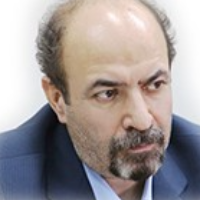The Triangular Relationship between Poverty, Inequality and Growth in Iran during the Development Plans
Author(s):
Article Type:
Research/Original Article (دارای رتبه معتبر)
Abstract:
Introduction
An issue which is often recurring in discussion on development is whether the main focus of development strategies should be on growth or on poverty and/or inequality. The goal of development strategies can be put in two statements. “First, the rapid elimination of absolute poverty, under all forms, is a meaningful goal for development Second, the reduction of absolute poverty necessarily calls for highly country-specific combination of growth and distribution policies” (Bouguignon, 2003, P. 69).Issues related to the benefits of growth accrued to the poor have also been a priority of development policy in the 1990s. An emerging consensus is that growth alone is a rather blunt tool for poverty reduction. In addition to the emphasis on poverty reduction, policies of redistribution of income and assets have become increasingly important. A policy agenda that addresses both distributional concerns and poverty reduction could lead to the enhancement of both economic growth and equity. Indeed, the relationship among growth, inequality, and poverty is complex and interdependent.
Method
In this paper, the relationship between economic growth, inequality, and poverty during the years of the second to fifth development plan of Iran is examined. To this end, using the concept of pro-poor growth, this study examines the period in which the poor have benefited from economic growth and how the distribution of the benefit of economic growth has been. The measure “Poverty Equivalent Growth Rate” (PEGR) was used, which takes in to account both the growth rate in mean income and how the benefits of growth are distributed among the poor and the non-poor. The proposed measure satisfies a basic requirement that reduction in poverty is a monotonically increasing function of the PEGR; the larger the PEGR, the greater the reduction in poverty will be. Thus, the PEGR is an effective measure of poverty reduction, i.e. maximization of PEGR implies a maximum reduction in poverty. If a government’s objective is to achieve a maximum reduction in poverty, then its policies should be focused on maximizing the PEGR. Further the PEGR can be used as an important indicator to monitor poverty over times as well as across socioeconomic and demographic groups (Kakwani & Son, 2008) This methodology is developed based on Atkinson’s theorem linking the generalized Lorenz curve and changes in poverty.The pattern of growth has been analyzed in urban and rural regions of Iran using the National Household Survey (NHS) covering the period 1995-2016. On average, each NHS contains information on more than 15,000 households.
Table 1:Poverty growth for Iran: 1995-2016
percentile Second plan
1995-1999 Third plan
2000-2004 Fourth plan
2005-2010 Fifth plan
2011-2016 Urban Rural Urban Rural Urban Rural Urban Rural
10 6/37 6/28 9/61 11/20 0/36 -3/34 -9/89 -7/36
20 5/32 4/18 8/68 9/64 0/40 -3/17 -9/44 -6/25
30 5/11 3/10 8/13 8/85 0/39 -3/27 -9/13 -5/69
40 4/90 2/44 7/86 8/16 0/33 -3/36 -8/41 -5/20
50 4/69 2/03 7/78 7/59 0/17 -3/38 -7/54 -4/15
60 4/56 1/75 7/72 7/13 0/09 -3/40 -6/16 -3/09
70 4/47 1/52 7/71 6/79 -0/01 -3/39 -4/89 -2/02
80 4/33 1/33 7/69 6/46 -0/16 -3/38 -3/37 -0/65
90 4/22 1/10 7/74 6/23 -0/42 -3/48 -2/02 0/57
100 3/99 1/37 7/20 6/34 -1/10 -3/88 -0/74 1/08
Findings
Empirical study illustrated that the growth has been pro-poor during the second (1995-1999) to third (2000-2004) development plan in urban regions (figure. 1). The annual growth rate of the mean income in the second plan period (1995-1999) is 3.99%. It should be noted that taking account of g(p)>0 for all P values, we can conclude that poverty has declined between 1995 and 1999. Since g(p) is more than 3.99 for all p<100, it implies that the growth has been pro-poor during this period. A similar situation occurs in the next period, 2000-2004. The annual growth rate of per capita income is 7.20% and growth is pro-poor. Figure. 1. Pro-poor poverty growth curve for urban regions in Iran: 1995-1999 and 2000-2004
Unfortunately, the pro-poor growth did not continue in the two subsequent periods —forth (2005-2010) and fifth (2011-2016) development plan— when the average growth rate become negative due to the financial crisis. The growth rate of per capita income declined at annual rates of -1.1 and -0.74 during 2005-2010 and 2011-2016, respectively. In the fifth development plan, the benefits of growth received by the poor are proportionally less than those received by the non-poor (Figure. 2)
Figure 2. Not Pro-poor poverty growth curve for urban regions in Iran: (2005-2010) and (2011-2016)
The poverty growth curve in rural regions during development programs was approximately the same in urban regions (figure. 3).
Figure 3. The poverty growth curve in rural regions in Iran: 1995-1999; 2000-2004; 2005-2010 and 2011-2016.
Discussion
The results reveals that despite the implementation of fifth development programs, poverty reduction policies have not been used as a sustainable strategic plan during developmental plans, and the use of oil revenues to solve the poverty issue as a therapeutic project without considering the growth and developmental issues, leads to poverty at some point, but on the other hand, causes the poverty return in later periods with a greater scope. As in recent years, with the slowdown of economic growth, has returned to the society more intensely, and as a result, the phenomenon of poverty and the underdevelopment of the economy in the country have reached a higher degree.
Ethical Considerations
Funding
In the present study, all expenses were borne by the author and he did not have any sponsors
Authors’ contributions
All authors contributed in designing, running, and writing all parts of the research.
Conflicts of interest
The authors declared no conflict of interest
Acknowledgments
In this article, all rights relating to references are cited and resources are carefully listed.
Keywords:
Distribution , Inequality , Iran , Poverty , Pro-Poor Growth
Language:
Persian
Published:
Social Welfare Quarterly, Volume:18 Issue: 71, 2019
Pages:
9 to 44
magiran.com/p1989481
دانلود و مطالعه متن این مقاله با یکی از روشهای زیر امکان پذیر است:
اشتراک شخصی
با عضویت و پرداخت آنلاین حق اشتراک یکساله به مبلغ 1,390,000ريال میتوانید 70 عنوان مطلب دانلود کنید!
اشتراک سازمانی
به کتابخانه دانشگاه یا محل کار خود پیشنهاد کنید تا اشتراک سازمانی این پایگاه را برای دسترسی نامحدود همه کاربران به متن مطالب تهیه نمایند!
توجه!
- حق عضویت دریافتی صرف حمایت از نشریات عضو و نگهداری، تکمیل و توسعه مگیران میشود.
- پرداخت حق اشتراک و دانلود مقالات اجازه بازنشر آن در سایر رسانههای چاپی و دیجیتال را به کاربر نمیدهد.
دسترسی سراسری کاربران دانشگاه پیام نور!
اعضای هیئت علمی و دانشجویان دانشگاه پیام نور در سراسر کشور، در صورت ثبت نام با ایمیل دانشگاهی، تا پایان فروردین ماه 1403 به مقالات سایت دسترسی خواهند داشت!
In order to view content subscription is required
Personal subscription
Subscribe magiran.com for 70 € euros via PayPal and download 70 articles during a year.
Organization subscription
Please contact us to subscribe your university or library for unlimited access!




